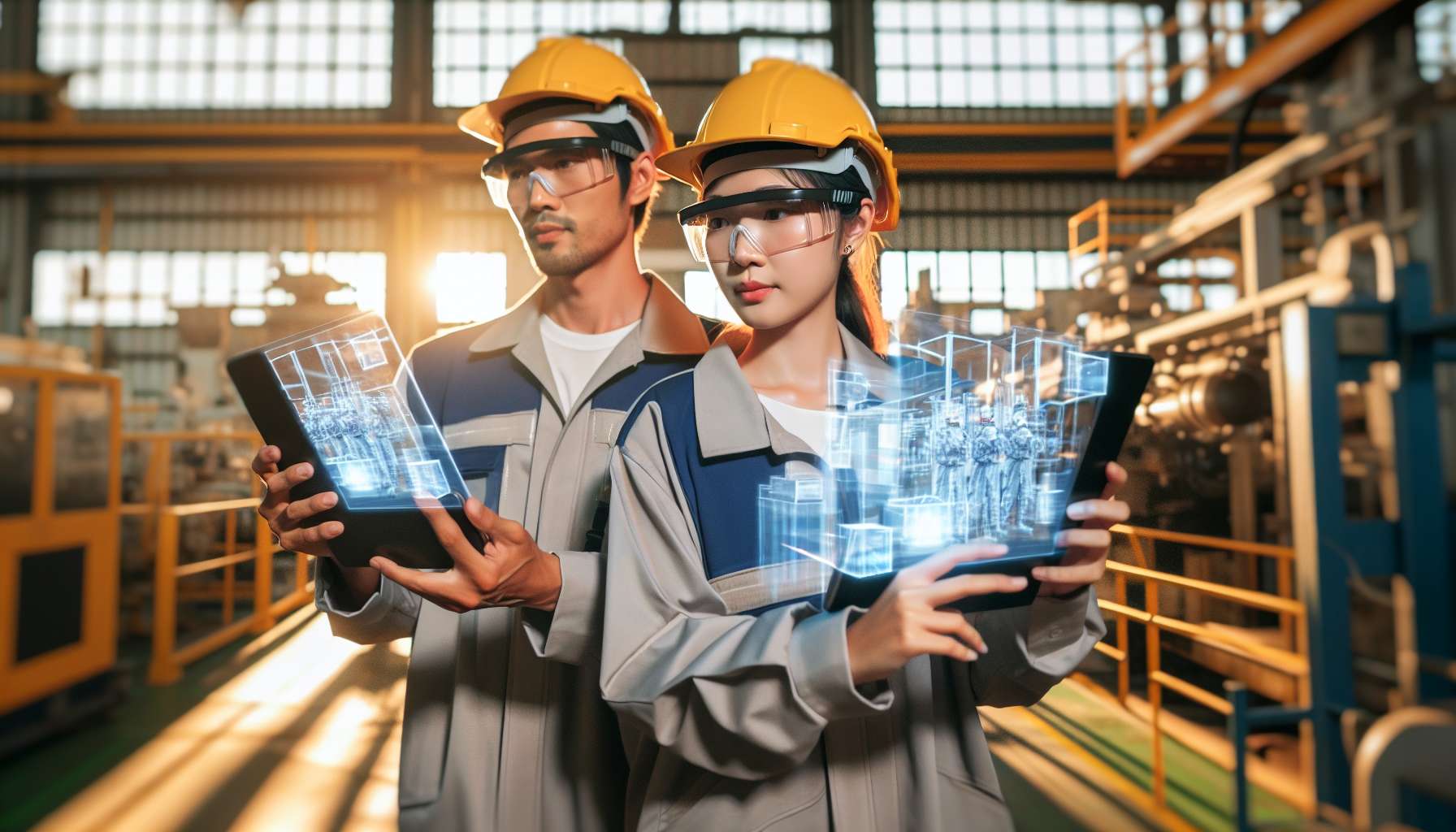Revolutionizing Training and Safety in Manufacturing with AR
Augmented Reality (AR) has emerged as a game-changing technology with the potential to transform various industries, and manufacturing is no exception. By integrating digital information into the real world, AR offers a unique opportunity to enhance training and safety procedures in manufacturing facilities. In this article, we will explore how AR is revolutionizing the manufacturing sector by providing improved training experiences and ensuring safer working environments.
Enhanced Training Experiences
Traditional training methods in manufacturing often involve lengthy classroom sessions or on-the-job training, which can be time-consuming and costly. AR technology offers a more efficient and engaging alternative. With AR, trainees can access interactive and immersive training modules that overlay digital information onto real-world objects.
For example, imagine a new employee learning how to operate a complex piece of machinery. Instead of relying solely on manuals or observing experienced workers, AR can provide step-by-step instructions and visual cues directly in the trainee’s field of view. This hands-on approach allows trainees to learn at their own pace, reducing the learning curve and improving knowledge retention.
AR can also simulate realistic scenarios, allowing trainees to practice their skills in a safe virtual environment. This not only enhances their confidence but also minimizes the risk of accidents or damage to equipment during the learning process.
Ensuring Safer Working Environments
Safety is a top priority in manufacturing, and AR technology can play a crucial role in improving workplace safety. By overlaying real-time data and visualizations onto the physical environment, AR can provide workers with valuable information and warnings to prevent accidents.
For instance, AR can highlight potential hazards, such as high-voltage areas or restricted zones, directly in a worker’s field of view. This helps employees navigate their surroundings more safely and avoid dangerous situations. AR can also provide real-time feedback on proper ergonomics and body mechanics, reducing the risk of musculoskeletal injuries.
In addition, AR can assist in equipment maintenance and troubleshooting. By scanning a machine with an AR-enabled device, technicians can access relevant information, such as maintenance schedules, repair guides, and diagnostic data. This streamlines the maintenance process, reduces downtime, and ensures equipment is functioning optimally, further enhancing safety in the manufacturing environment.
The Future of AR Training in Manufacturing
The potential of AR in manufacturing training and safety is vast, and the technology is continuously evolving. As AR devices become more affordable and user-friendly, their adoption in the manufacturing sector is expected to skyrocket.
Looking ahead, we can anticipate even more advanced applications of AR in manufacturing. For example, remote assistance through AR-enabled smart glasses can connect workers with experts in real-time, allowing for immediate guidance and problem-solving. This can be particularly valuable in situations where specialized knowledge is required or when travel is not feasible.
Furthermore, the integration of artificial intelligence (AI) with AR can enable personalized training experiences tailored to individual employees’ needs. AI algorithms can analyze performance data and provide targeted feedback and recommendations for improvement, maximizing the effectiveness of training programs.
In conclusion, AR is revolutionizing training and safety procedures in the manufacturing industry. By providing enhanced training experiences and ensuring safer working environments, AR technology is empowering manufacturing companies to optimize their operations and improve overall performance. As the technology continues to advance, the possibilities for AR in manufacturing are limitless, making it an exciting area to explore for businesses seeking to stay ahead in the ever-evolving manufacturing landscape.





